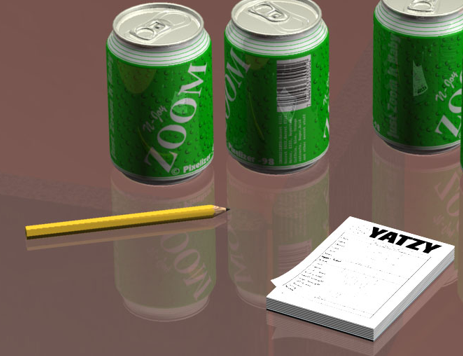raytracing
Ray tracing is a computer graphics process for the realistic representation of virtual, three-dimensional scenes on a two-dimensional screen. Others include phong shading and radiosity. In ray tracing, an extremely computationally intensive process, the effect of lighting on the textures of the object surfaces is calculated, as are the resulting light-shadow effects, taking into account the viewing angle.
The light reflections of the various surface materials that arise during ray tracing play a crucial role, as the surface texture, its shape and color determine the refraction, diffraction, absorption and reflection of the incident light rays. As for the surface textures, they reflect incident light in a punctiform, uniform or diffuse manner, depending on the material texture. Metals, for example, produce a different light reflection than rubber or plastics. Light-shadow effects are determined by the number of light sources, their luminous intensity, hue, and arrangement, and as for the viewing angle, objects may be obscured by another object depending on the viewing angle. This visibility problem is treated in ray tracing in the same way as the propagation of light rays. According to the procedure, a visual ray is sent from a virtual viewer into the 3D scene, which calculates every single pixel. The pixels from which the visual beam is first reflected are visible. The more advanced calculation takes into account the light reflection from the first object into space and onto other objects, whose surface structure causes further light effects due to the reflected light.
Raytracing works with an infinite number of small triangles during the calculation. The complete scene with all objects, light reflections and shadows is composed of small triangles, each of which is calculated separately for each individual light ray and the intersection points of the light rays. In order to reduce the enormous computational effort, which is estimated at 1 trillion computational operations for a normal display size, ray tracing only computes the objects and light effects that the viewer can actually see. Non-visible light effects and light reflections that occur away from the viewer into non-visible space, on the other hand, are not taken into account. The computational process thus corresponds to the user's way of viewing. A cost-effective alternative to ray tracing is environment mapping, which is less computationally and time intensive.
With ray tracing, 3D scenes can be represented in a physically correct way. This concerns the surfaces, the distances between the objects and their perspectives and the many light-shadow effects.

